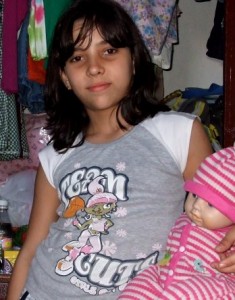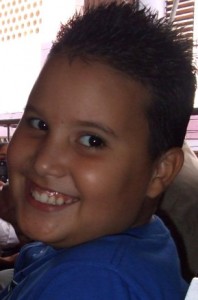Three Kings Day in Cuba
By Irina Echarry

HAVANA TIMES, January 5 – I didn’t have Santa Claus or a Christmas tree, but nothing seemed out of the ordinary, and as such I could live inventing toys once a year. Carlos Varela
That was the chorus of a song we hummed as young people in the 1990s. During those turbulent years, folk singer Carlos Varela dared to say what we all knew, but weren’t used to hearing.
– Mommy, this is the doll I want you to buy me for the Three Kings Day
– It’s a little expensive; don’t you like this littler one?
– No mommy, buy me this pretty one, don’t be mean…
That scene was repeated each year during the last days of December and the first days of January. It wasn’t that long ago when the majority of Cuban girls and boys didn’t have any idea of Three Kings Day.
The tradition, based on a biblical passage, was a story salvaged here by some grandmothers and scenes in some movies. Those of us born in the 1970s never heard about the three characters that traveled on camels with gifts for children who behaved well.

Instead, what we knew was that each July we had the right to a toy in the indicated place, at the indicated day and hour. There were three options (one for each king?) basic, non basic and directed.
The directed were games or jacks or a jump rope or a very small doll; the basic consisted of a special and highly sought after toy, like a big doll, bicycle or tricycle; and the non basic was something in between.
If you had the privilege to be among the first on the list, perhaps you could get the bicycle or tricycle or a scooter. To the contrary, if your turn was later on, the quality and quantity of the articles decreased. They were hard times and people had to adjust to the situation.
During the rest of the year it was rare to see toys in the stores. That was the period when “we were all equal” and all children anxiously waited for the third Sunday of July, hoping for a good position in the line to buy. Nobody asked for anything, we knew we had to accept whatever we got.
The religious festivities during the first years of the Revolution mixed political and social happenings. Some magazines from the time illustrated their message about January 6 with the image of the three bearded men that came from the east (in this case the rebels from the east of Cuba) bringing happiness and hope for a better world for all homes on the island. There are those who say that the children of the Sierra Maestra Mountains or the Cienga de Zapata lowlands received their first toys after the 1959 Revolution.

Little by little, the tradition of gift giving on Three Kings Day became dormant, but never totally disappeared. A part of the population observed the date although there was barely anything to give to the children.
I remember the sad impression I had when I saw a boy cry in front of a toy store window on Obispo Street in Old Havana when they opened up the shops in foreign currency in the 1990s, after possessing US dollars was no longer illegal.
The mother tried to explain to the boy that she didn’t have the money and the boy screamed and the desperate women ended up hitting him. With the two currencies circulating, many people continue with little buying power, being paid with currency that can not be used to buy the toys, which are today widely available. However, the product isn’t sold in the currency that workers receive as their pay.
Starting in 1999, the Havana City Historian’s office began a special plan that consisted of delivering toys to children in the primary schools and daycare centers of Old Havana. Later, it expanded to other municipalities. The handing out of the toys usually takes place near Three Kings Day and coincides with the January 8 commemoration of the entrance of the Rebel Army led by Fidel on the Liberty Caravan back in 1959.
Daniela, a fifth grade student at the Reinaldo Cruz Romeu school in Regla, was a little disillusioned last year: “I thought they were going to give me a big Barbie because when I was in third grade I saw they gave those to fourth graders, but there weren’t gifts for anyone. People say the Chinese didn’t send the boat of toys and I was left only with my wishes. This year I don’t know what I’ll get.” I asked Daniela if she knew the story of the Three Kings Day tradition. She shook her shoulders and said: “I don’t know… but they always give me a present at school and at home.”
Marquitos wants to be a singer; he’s in sixth grade at a school in Old Havana and on Saturday mornings he studies French. “Well, I hope they give me something good, the toys for sixth graders are special because it’s our last year, sometimes they give bicycles, let’s wait and see. At home I already know what they are going to give me for my birthday on January 4, but now what’s left is one for Three Kings Day… I told my parents that I want a microphone.”
I asked, don’t you write letters to the Three Kings? With his eyes full of mischief, Marquitos winks as he answers: “The magicians are my parents who have to work a lot to buy everything, the letter thing is stupid, in my classroom nobody does it, that is more for the smaller kids, I am already in sixth grade.” He says it with that pride in being a big kid.

The problem with Three Kings Day in Cuba is not the toys in themselves but the prices. Today’s parents weren’t educated for this period of buying and accumulating more all the time. In our childhood, the illusions had nothing to do with money; in fact, it was almost a sin to talk about money. Fun and games took place in a healthy, happy environment. Our parents made a real effort so we would have a brighter future, and even the smallest of us accepted that, we didn’t know anything different.
The tradition is nice if you stay on the positive side and don’t take the path to consumerism. Some years back we learned that we were not all equal, that there are those who have more than others.
There are parents who invest large amounts of money so their children are “the best.” Others must make a lot of effort to purchase the cheapest toy that costs 1 CUC (equal to 25 regular pesos or US $1.20) at the risk that their children will be made fun of by the neighborhood children or at school, because few are satisfied with those toys.
What’s important is that the boy or girl has toys of some kind, bought in stores or made at home, that they dream and play with imagination. The quality and quantity of the articles is what’s least important. The solution is not to give everyone the same or, to the contrary, restrict purchases. The ideal solution is that the family educates based on feelings and affection, independent of their economic resources. It is in childhood where you learn that love can’t be bought in any store nor have a special day to be given.






Comments are closed.